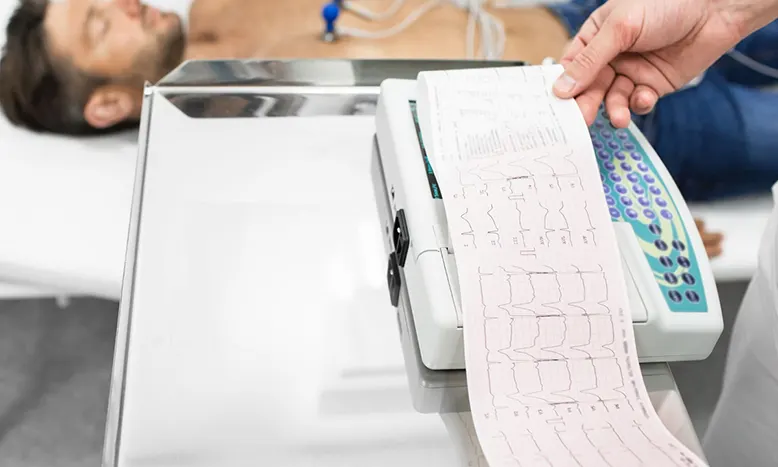An ECG is a commonly performed cardiac test that is used to record and check the electrical activity of the heart. It shows the electrical activity as line tracings on a paper, with spikes and dips called waves.
An electrocardiogram (ECG) is a simple test that checks how your heart is beating by measuring its electrical signals. Small sensors are placed on your skin to catch these signals each time your heart beats. A machine records the signals, and a doctor looks at the results to see how your heart is working. Doctors like heart specialists or even your regular doctor might ask for this test if they think your heart could have a problem. In spite of having a comparable name, an ECG test isn’t equal to an MRI or ultrasound scan of the heart. Instead, it only records the electrical activity of the heart and doesn’t produce images. This makes it a quick and easy way to monitor heart rhythm and detect problems like irregular beats or heart damage.

An ECG scan is frequently used along with different tests to help analyze and screen conditions influencing the heart. It is also used to examine signs of a potential heart issue, for example, palpitations (abruptly observable pulses), chest torment, dizziness and breathing issues.
A progression of ECG scan can be taken over a period of time to monitor an individual with previously detected heart conditions.
The ECG test is directed by putting electrodes on the patient’s arms, legs, and chest. A gel is applied on before the electrodes are attached on these spots. These electrodes are attached to a machine that will record the electrical activity of the patient’s heart. The method is non-obtrusive.